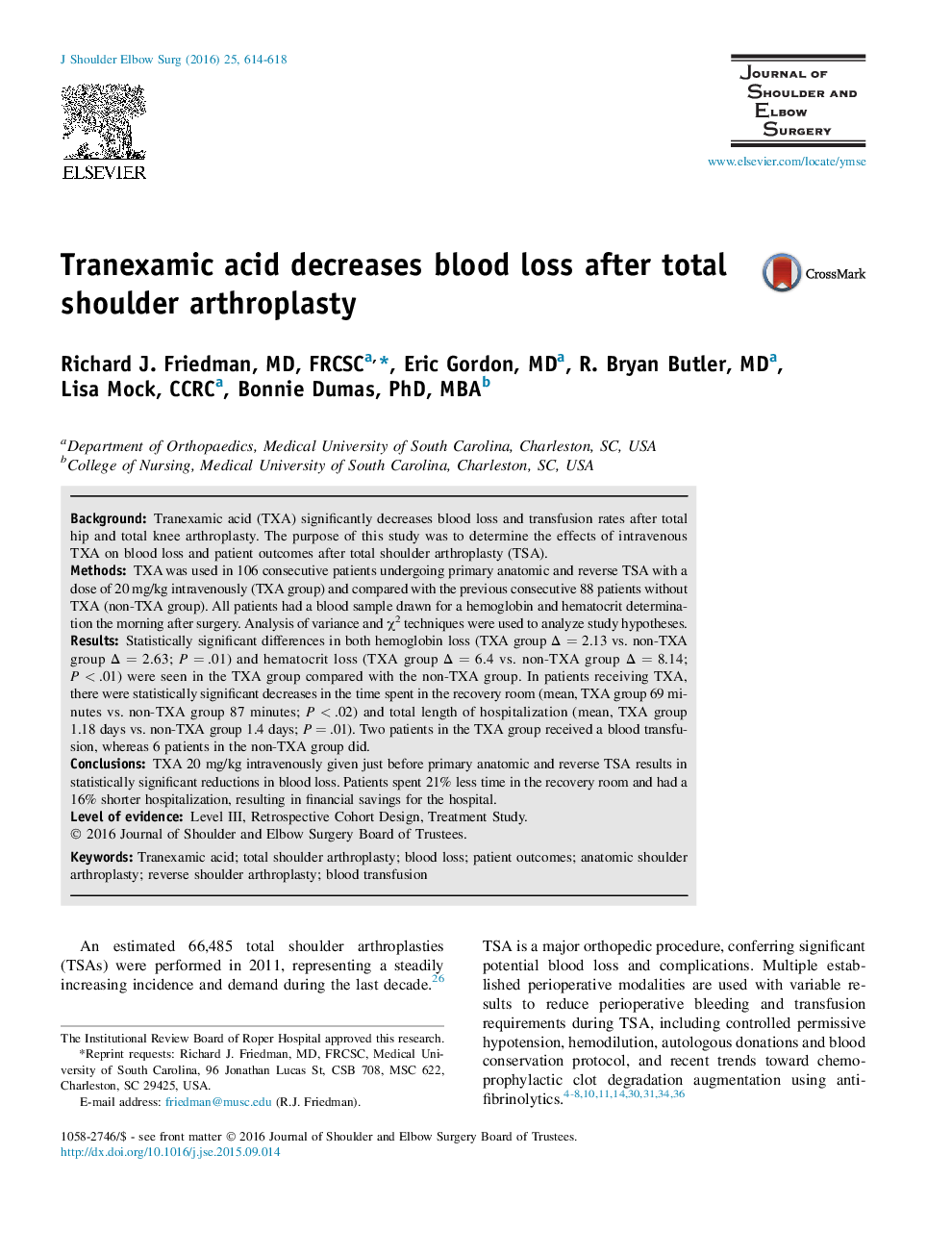| Article ID | Journal | Published Year | Pages | File Type |
|---|---|---|---|---|
| 4073130 | Journal of Shoulder and Elbow Surgery | 2016 | 5 Pages |
BackgroundTranexamic acid (TXA) significantly decreases blood loss and transfusion rates after total hip and total knee arthroplasty. The purpose of this study was to determine the effects of intravenous TXA on blood loss and patient outcomes after total shoulder arthroplasty (TSA).MethodsTXA was used in 106 consecutive patients undergoing primary anatomic and reverse TSA with a dose of 20 mg/kg intravenously (TXA group) and compared with the previous consecutive 88 patients without TXA (non-TXA group). All patients had a blood sample drawn for a hemoglobin and hematocrit determination the morning after surgery. Analysis of variance and χ2 techniques were used to analyze study hypotheses.ResultsStatistically significant differences in both hemoglobin loss (TXA group Δ = 2.13 vs. non-TXA group Δ = 2.63; P = .01) and hematocrit loss (TXA group Δ = 6.4 vs. non-TXA group Δ = 8.14; P < .01) were seen in the TXA group compared with the non-TXA group. In patients receiving TXA, there were statistically significant decreases in the time spent in the recovery room (mean, TXA group 69 minutes vs. non-TXA group 87 minutes; P < .02) and total length of hospitalization (mean, TXA group 1.18 days vs. non-TXA group 1.4 days; P = .01). Two patients in the TXA group received a blood transfusion, whereas 6 patients in the non-TXA group did.ConclusionsTXA 20 mg/kg intravenously given just before primary anatomic and reverse TSA results in statistically significant reductions in blood loss. Patients spent 21% less time in the recovery room and had a 16% shorter hospitalization, resulting in financial savings for the hospital.
